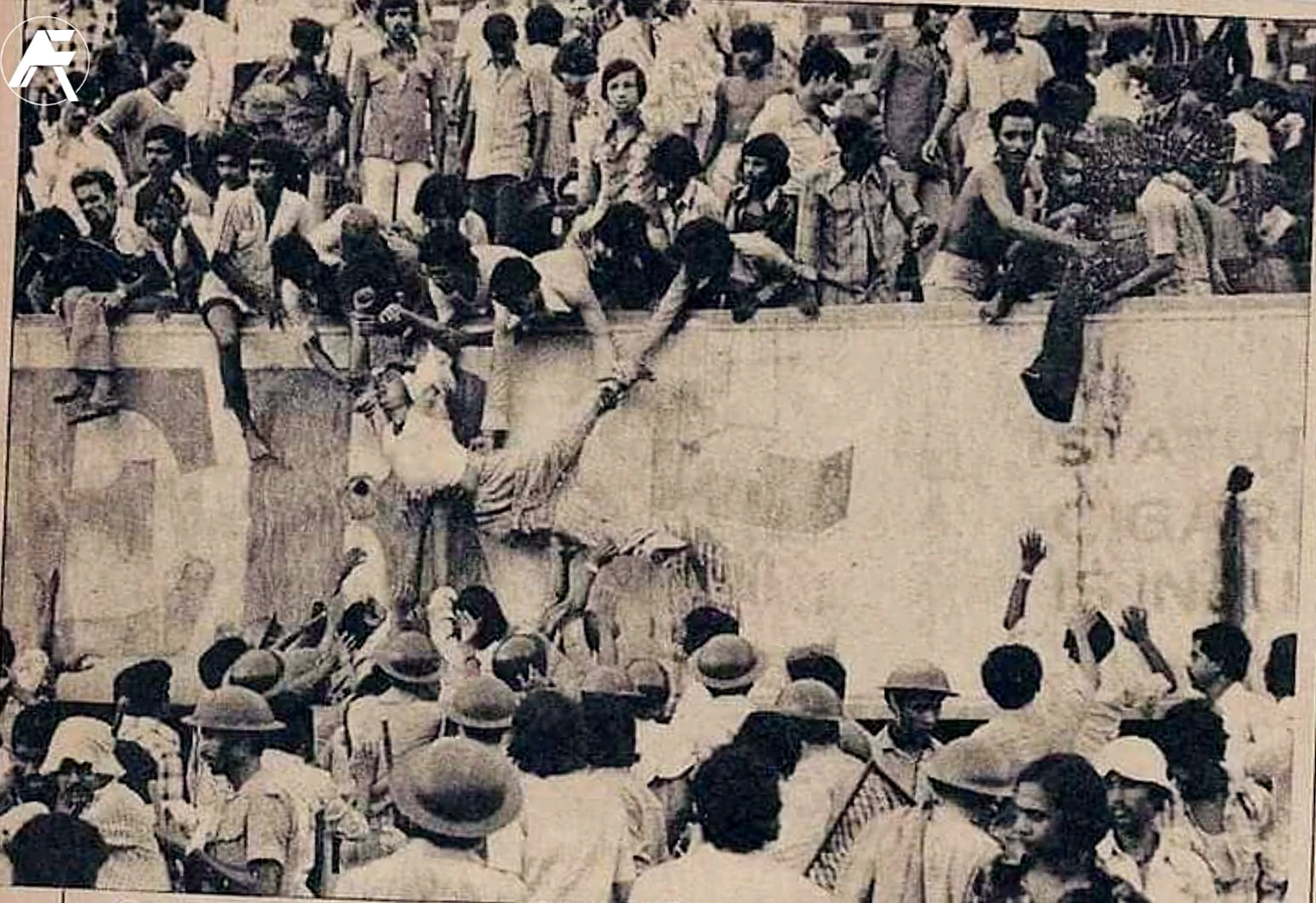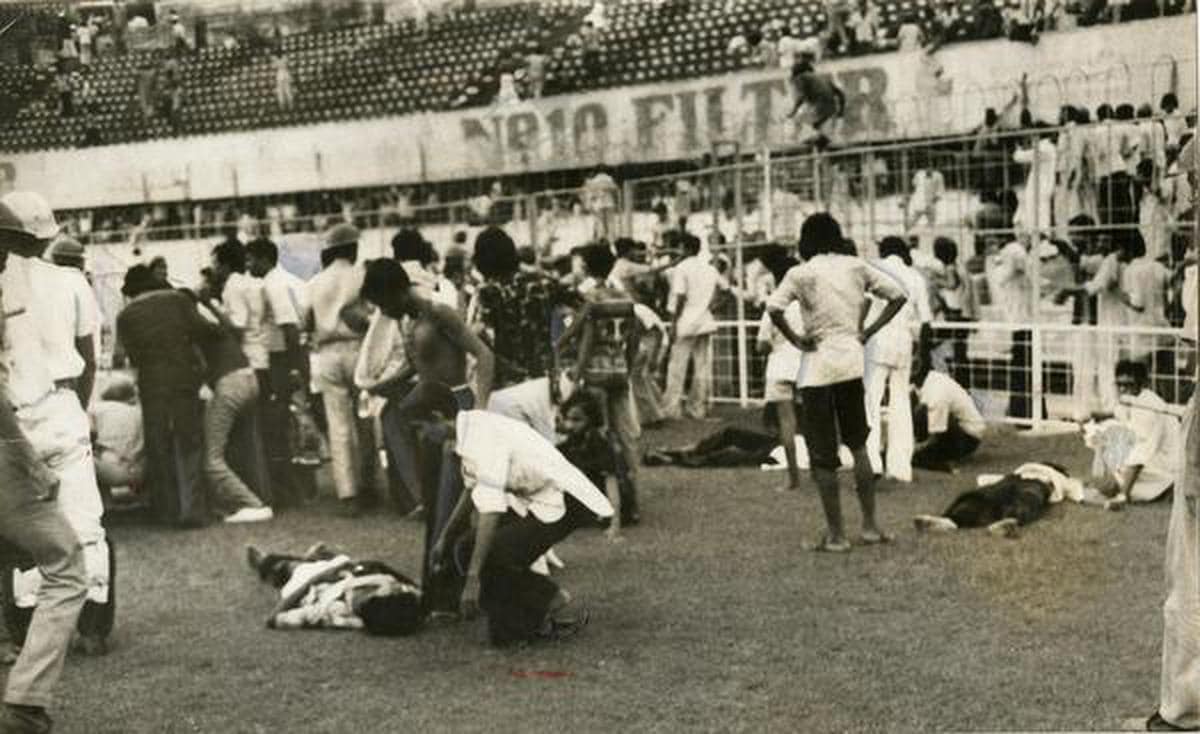| An August requiem It was a Saturday. Eden Gardens, then an amphitheatre for football and cricket, was packed as Mohun Bagan and East Bengal trotted out for a local league derby. In 1980, the 24-team Calcutta league, Asia’s oldest, was split into two groups of 12 with the top two from each making the semi-finals. Mohun Bagan and East Bengal were in the same group; Mohammedan Sporting in the other. Mohammedan Sporting had hollowed out East Bengal getting Surajit Sengupta, Bhaskar Ganguly, in the news not for his undeniable football prowess, Prasanta Banerjee, Shabbir Ali, Chinmoy Chatterjee and Ramen Bhattacharya to switch. So it fit that Mohun Bagan and East Bengal would want to avoid the team in black-and-white. Nobody remembers much of the match which ended goalless and was, by all accounts, soulless. What does get talked about is East Bengal right back Dilip Palit planting his studs on Mohun Bagan winger Bidesh Bose in the 57th minute. It was Palit’s fifth rash challenge, Arijit Sen’s report for ‘Sportsworld’ recalled. Bose retaliated and both were shown the red card by referee Sudhin Chatterjee. “Immediately a sharp, almost lethal shower of stones landed on spectators on the western wing of the Ranji Stadium (a section of the stands at Eden). A mild retaliation from that end resulted in an even more dangerous onslaught,” Sen wrote.  The day football died (Source: ANI) Mayhem followed. Rushing towards the exit led to a stampede and 16 men died in what is football’s worst tragedy in India. “Love of football made us pay a heavy price,” Ajoy Bose, the journalist and radio and television commentator, had written in the Bengali daily ‘Jugantar’. “Only those who ran to the safety of the stands below were saved…But they did not escape the wrath of the police,” said Sen’s report. His analysis factored in Calcutta’s population explosion before, during and after the war in 1971. “The consequent pressure on space and the gradually deteriorating economic condition led to…the Hindi film hero and the football star…to be placed on the same pedestal of invincibility.” Football was an escape from reality and the success of the team felt like the success of the self, he wrote. After that day, football ground to a halt in Calcutta, as the city was then known, with the league and the IFA Shield being cancelled. Never again have supporters of the archrivals sat next to each other as they did that afternoon.  Stampede at Eden (Source: ANI) As to how they were allowed to do that, there are no clear answers even today. Only breathtaking incompetence on part of the Indian Football Association, football’s apex unit in West Bengal, and the police could have allowed that. Especially after the teams had come to blows fuelling spectator unrest in the Federation Cup final which, thanks to the incandescent brilliance of Majid Bishkar, East Bengal dominated but scoring against the run of play, Mohun Bagan managed a 1 -1 draw. Not long after that game, where Mohun Bagan and East Bengal were declared joint-winners, West Bengal chief minister Jyoti Basu issued an appeal in newspapers urging supporters to shun violence at a football ground. Yet supporters were not segregated.  (Source: Twitter Screengrab / Indian Football History) Why, Bishkar asked. Only briefly did the Iranian’s genius bloom but when it did, in 1980 and 1981, it mesmerised India. Along with compatriots Jamshed Nassiri and Mahmood Khabaji, Manoranjan Bhattacharya, Mohammed Habib, and Sudhir Karmakar, Bishkar helped coach PK Banerjee, back at East Bengal after four years, forge a team that was difficult to play against. “What were the police doing,” he asked in an interview to the Bengali sports magazine ‘Khela’ in 1987. It was mystifying to the 1978 World Cup representative as to how IFA allowed spectators of archrivals sit so close to each other. Bishkar’s interview, Sen’s report and that of Bose have been reproduced in ‘Majid’, the book in Bengali by journalist Kashinath Bhattacharjee that looks back at the mercurial striker’s time in India. When Bishkar came for an East Bengal function in 2019, he was again asked about that day. It was only when he was returning to his lodgings late in the evening that he could understand the full extent of what had happened, he said. “There was a big crowd next the hospital near our place. I spoke to some of them and found out,” said Bishkar. It was still difficult for him to accept that lives were lost due to a game of football he was involved in, said Bishkar. In a season they were expected to be routed, East Bengal were joint-winners in the Federation Cup and Rovers Cup largely because Bishkar was the first among equals in a red-and-gold shirt. But that afternoon at Eden forced many to promise to their families that they would never again go to a live football match, Bhattacharjee has written. From then, August 16 is remembered as Football Lovers’ Day by IFA and a voluntary blood donation camp organised. This time, 42 years to that day, the Durand Cup will kick-off in Kolkata, Guwahati and Imphal. Like then, East Bengal have had their share of struggles in building a team. Like in 1980, a Kolkata derby was slotted on that day. Maybe it is all right that it got pushed back. Recriminations, inevitable after a derby, should have no place on a day meant for requiem Courtroom drama continues While the Durand Cup will see all 11 ISL teams in action, there has been no let-up in the off-the-pitch action which continues to be played through letters and lawyers. On Thursday, the Supreme Court asked all parties to resolve differences through dialogue after talking to FIFA. A fresh date for hearing was set for August 17. Following the August 3 order of the Supreme Court, the crisis aggravated when Fatma Samoura and Windsor John wrote to AIFF. The committee of administrators appointed by the top court to run AIFF replied but earlier this week, the Union ministry of youth affairs and sports moved the court seeking a review of its the order. Then, CoA filed a contempt petition against former AIFF president Praful Patel. The last hasn’t been heard on this but this much is clear: football in India is now a severely divided house. The promise of greater agency has put former players and officials of the state associations, who argue that players should come through state units and not be given individual status as it violates FIFA norms, in different corners. CoA and the sports ministry too are not on the same side and state officials, who have kept the sport alive all this while, have been cast as people who care little for football but a lot about themselves. In the middle of all this, the threat of AIFF being suspended and the U17 women’s World Cup being taken away from India stays real. |